
|
 |
Attractions Management Handbook - Top Nosh

Feature

|
|
| Top Nosh
|

Prestige, PR and more people: these are all things you can expect if you open a fine dining restaurant at your attraction. A good selling point definitely, but are they worth the outlay?
|
|
It may come as no surprise that art and museum lovers are willing to pay high prices for a fine dining meal, but now even theme park visitors are showing an appetite for white tablecloths at the end of the day. In many ways, high-end restaurants are a natural fit with visitor attractions, which offer a day out or a holiday treat. When people are relaxed and in holiday mode, they are often inclined to spend more money, be more adventurous and seal the memories with a delicious meal. Plus, many attractions have stunning locations, either man-made or natural, which are a perfect complement to a top restaurant. While the traditional fare of pizzas might be more profitable than an upscale restaurant, as consumers seek higher quality culinary experiences and with the food offering improving across the industry, a burger and fries might not cut the mustard for much longer. The high upfront investment costs, coupled with narrow operational margins, can make this appear a daunting option, so it is important to either bring in an external operator, enter into a partnership, or engage a highly knowledgeable and experienced team. Finally, high end doesn’t mean stuffy. Even if people are paying US$100 (£65, e91) a head, it might not be possible to impose a dress code, especially if they’ve been riding coasters all day.
|
|

|
THE MODERN

The Museum of Modern Art, USA

Over the past 10 years, MoMA has found that having a fancy restaurant has secured the institution column inches in publications around the world, which has led to more customers for both the restaurant and the museum, who come to enjoy a mix of art and top-notch food.
Located in a stunning space within MoMA, overlooking the Abby Aldrich Rockefeller Sculpture Garden, The Modern is an elegant space, with floor-to-ceiling windows, designed by architects Bentel & Bentel. A dedicated street entrance means it has become popular with locals as well as museum visitors.
Run by Union Square Hospitality, the menu created by executive chef Abram Bissell is contemporary American. Dinner options include a six-course tasting menu or a US$108 (£70, e99) four-course prix fixe menu with diverse options for each course. A cheaper, more casual, experience is on offer in the Bar Room.
“The advantage of having MoMA as a neighbor is that we have the ability to attract many different markets across various countries,” says general manager Simon King. “We are often featured in foreign publications that prize the elegance and sophistication of The Modern with the spectacular art on view at MoMA.”
According to King the challenge of running an upscale restaurant is higher running costs across the board: a higher staff to guest ratio and narrower margins because of sourcing high-quality meat, produce, spirits, wine, and even tea and coffee.
| |
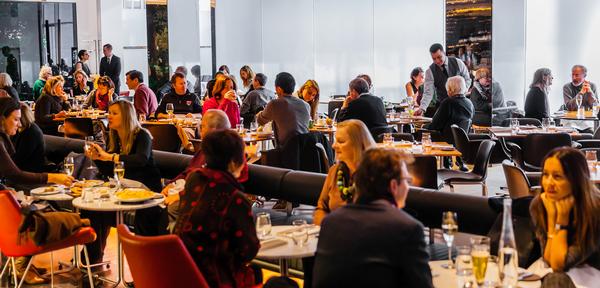

|

The elegance and sophistication of The Modern perfectly complements the spectacular art on view at MoMA |
|

|
MITSITAM NATIVE FOODS CAFÉ

National Museum of the American Indian, USA

The National Museum of the American Indians has found that when food complements the museum experience, it’s a winning recipe.
A lot of research went into creating a restaurant offering a unique dining experience that not only reflects the museum, but is an extension of it. Mitsitam Café (“let’s eat” in Piscataway and Delaware languages) serves traditional American Indian food sourced, where possible, by Native-approved vendors.
While the food is upscale, the overall dining atmosphere is casual. Guests pick up a tray like other museum dining facilities, but the difference is that they’re then met with five regional stations offering Native-inspired seasonal foods. These are manned by knowledgeable staff who are willing to answer questions about ingredients and flavours and offer samples. Part of the concept is to explain the cuisine to guests.
Devised by chef Jerome Grant, the menu features authentic dishes and required hours of research. The seasonality of the menu calls for an 80 per cent menu change with each equinox and solstice. “The uniqueness of the ingredients does create challenges. Availability and pricing are always factors that we have to contend with,” says Grant.
The Mitsitam Café took a while to set up because of lengthy meetings with tribal leaders to ensure ample representation. “It was no easy task, but ultimately the response was overwhelmingly positive on the quality of the food, the ingredients used as well as the diversity,” says Grant. “The café has become a valued partner to NMAI. Guests seek out the museum and the café jointly. Any time the food service operation complements its host museum, it’s a win for all parties involved.”
| |
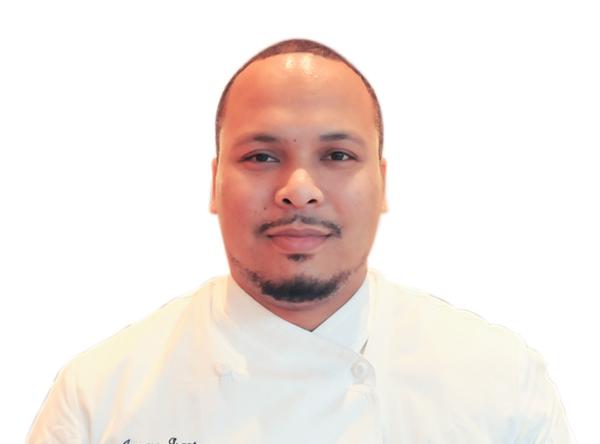

|

Chef Jerome Grant devised the menu |
| |
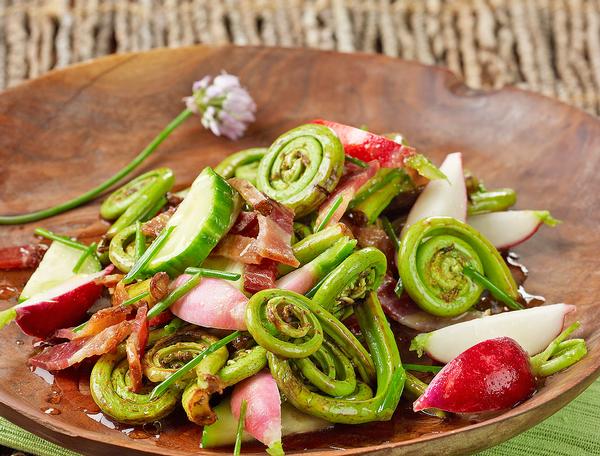

|
| The menu’s seasonality calls for changes with each equinox and solstice |
| |
|

|
AMMOLITE

Europa-Park, Germany

Europa Park aimed high when it opened Ammolite, a 30-cover fine dining restaurant. It set out to achieve a Michelin star and just one year after opening it became the first theme park in the world to have done so. Last year it earned a second star.
No expense was spared with the concept. Italian restaurant designer Claudio Carbone has created elegant surroundings, while Austrian chef Peter Hagen works from an open kitchen, offering a menu that changes every four weeks.
“One of the aims of the restaurant was to change people’s minds that you can’t get good food at amusement parks. We also hoped that a fine dining restaurant would help us appeal to a new market. It has successfully pulled in a new audience of people who come to Ammolite, stay overnight and visit the park the next day,” says Europa-Park director Thomas Mack.
As the park closes during the winter, Ammolite boosts off-season trade at the four hotels. In the early days 70/80 per cent of the diners stayed at the hotel, but now more regional people are visiting.
“Financially it was a gamble, with the challenge of finding the right team and educating guests to a certain extent,” says Mack. “But the marketing effect of the restaurant far outweighs any disadvantages. The restaurant has generated international attention, boosted the image of Europa-Park worldwide and its been written about in newspapers not normally interested in amusement parks.”
| |
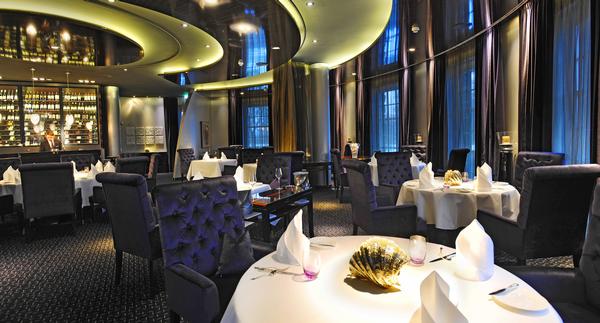

|

Since being awarded its second Michelin star, Ammolite is busy every day |
| |
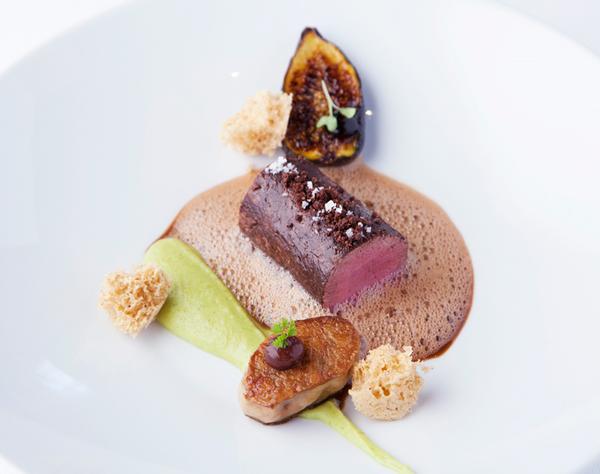

|
| The menu is Mediterranean-inspired |
| |
|

|
NERUA

The Guggenheim Bilbao, Spain

The Guggenheim Bilbao broke new ground when it launched a haute cuisine restaurant within an art gallery in 1997. As it was a pioneering move, there were no reference points, so an internationally recognised team of professionals was engaged.
Michelin award-winning chef Josean Alija was brought in at the helm to develop an adventurous gastronomic experience rooted in the locality, featuring oysters, red mullet and veal sweetbreads.
Juan Ignacio Vidarte, museum director general, says a high end restaurant was an integral part of the original museum concept: “Bilbao and the Basque country have a long tradition of rich gastronomy and haute cuisine is part of the local culture, so high-quality gastronomy was an integral part of the museum project from its inception. The concept is in keeping with the architecture of the building and the art it was about to house.”
There are three main markets for Nerua: museum goers who want to enjoy an experience which unites art, gastronomy and unique architecture; gourmets who are willing to travel the world in order to taste the work of celebrated chefs; and the restaurant-savvy local market.
“We’ve designed a full experience offering not only Nerua, but also urban food at the Bistro,” says Vidarte. “This enhances the public’s perception that they’ve lived a special day and transforms them into the best prescriptors, which attracts more visitors. The museum and the restaurant have a mutually beneficial relationship and also complement each other.”
| |
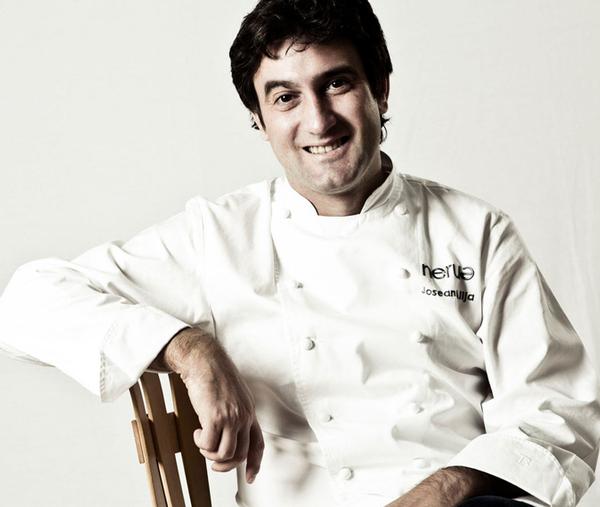

|

Chef Alija developed a unique menu |
| |
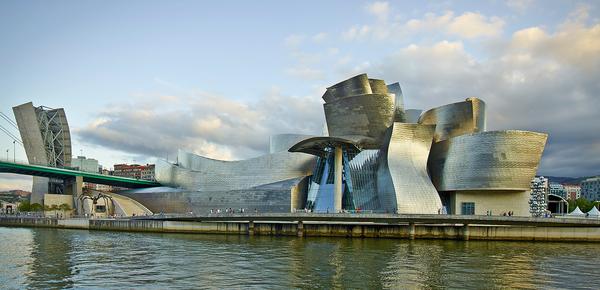

|
| Nerua’s gastronomic experience attracts museum goers, travelling gourmets and food-savvy locals |
| |
|

|
MONSIEUR PAUL

Epcot, USA

“Just because it’s a theme park, you don’t have to settle for burger and fries. We try to give guests an authentic experience of France,” says Eric Weistroffer, director of operations of Epcot’s haute cuisine restaurant, Monsieur Paul.
This elegant restaurant opened in 2013, taking over from Bistro de Paris, which was started in 1982 by French chef Paul Bocuse. Bocuse achieved three Michelin stars for 50 years straight at his Lyon restaurant and his culinary style still informs the ethos and menu at Monsieur Paul – now under the stewardship of one of his protégés, Francesco Santin.
Classic Gallic dishes with a contemporary interpretation are served, such as Rouget en ecailles: red snapper with crispy potato made to look like scales, in a rich rosemary and orange sauce.
“It reflects the Bocuse tradition of French classical cuisine served with the freshest ingredients at the perfect temperature and just the right seasonings,” explains Weistroffer.
When the restaurant was refurbished, they experimented by taking away the white tablecloths to make it more informal, but it soon became apparent that people want that elegant experience, even if they have been walking around the park all day. Weistroffer believes better restaurants within attractions is definitely a growing trend, as people are tiring of eating the regular fare and are looking for a quality experience.
“People are different when they are on holiday; they’re looking for experiences and want to say ‘I did it’, says Weistroffer, “which is why they’re more inclined to splurge and try adventurous food.”
| |
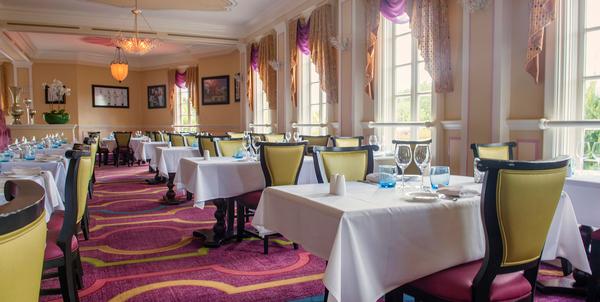

|

People want elegance, even if they’ve been walking around a park all day |
|

|
VICTORIA & ALBERT’S

Disney Grand Floridian Resort & Spa, USA

With opulent décor, candlelight, a harpist and impeccable service from staff in traditional Victorian attire, Victoria & Albert’s has been the crème de la crème of Disney’s dining experience since its launch way back in 1988.
Seasonal ingredients and changes daily inspire the avant-garde menu. Those really treating themselves book in at the Chef’s Table. Limited to one evening sitting in a cosy kitchen alcove, guests enjoy a personalised menu of up to 10 courses paired with wine and spirits. The head chef leads with a champagne toast.
“There has always been fine dining since Walt Disney World Resort opened in 1971 and today there are several top-tier restaurants,” says area manager Israel Perez. “Our guests are discriminating travellers and fine dining is an expected part of the Disney vacation. Victoria & Albert’s also counts discriminating central Floridians among its loyal fans.”
The restaurant has garnered numerous awards, like the AAA Five Diamond, and in 2014 was in the top five TripAdvisors Travelers’ Choice. Chef Scott Hunnel is a James Beard nominee for Best Chef South 2015. “All of these accolades elevate Disney’s status in the culinary area, attracting savvy travellers,” says Perez. “Disney continues to expand its dining options and top-tier dining will always be part of the vacation experience.”
| |
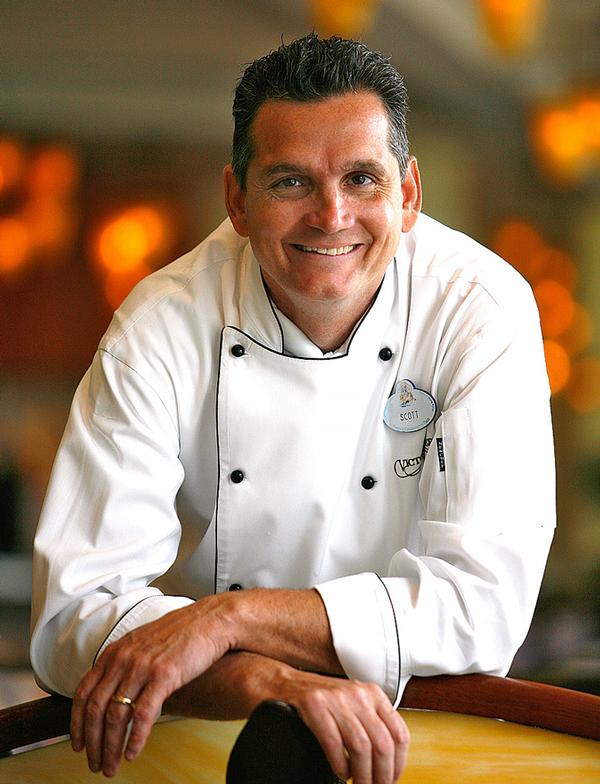

|

Hunnel is a James Beard nominee |
| |
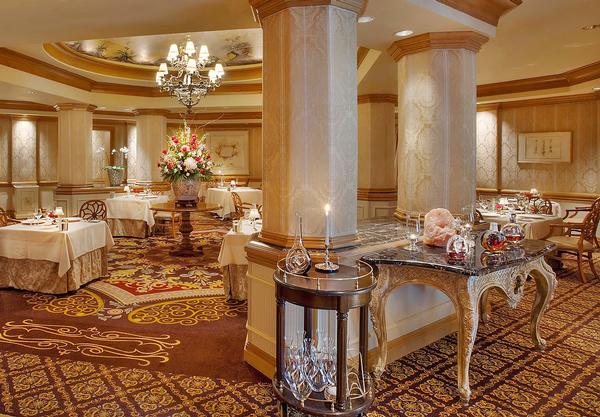

|
| Crème de la crème of Disney’s dining experience |
| |
|

|
OCEAN RESTAURANT BY CAT CORA

Resorts World Sentosa, Singapore

Q uality dining is high on the agenda at Resorts World Sentosa, featuring numerous restaurants run by celebrity chefs, like L’Atelier by Robuchon and Osia by Scott Webster. So when the concept was being put together for the resort’s prestigious restaurant within the S.E.A Aquarium, it was no surprise that all the stops were pulled out.
Chef Cat Cora, famed for her role in the tv series Iron Chef America, was engaged to head up Ocean Restaurant by Cat Cora.
“We realised that we had the potential to do something very special with the restaurant because of its location and setting,” says a spokesperson for Resorts World Sentosa. “By having Ocean Restaurant within the S.E.A. Aquarium, we’re able to offer visitors a unique dining concept that is different from our current offerings – it is Singapore’s only restaurant with an underwater view. As the first and only female chef on Iron Chef America, Cat Cora has become one of the largest names in the culinary community, and adds a new dimension to our current line up of celebrity chefs.”
To make the most of its other selling point – the marine life – the 63-seat restaurant offers all guests a good view. Walls have angled mirrors to reflect the aquarium for guests facing the opposite direction and the dining chairs swivel.
| |


|

Cat Cora is Sentosa’s latest celebrity chef |
| |
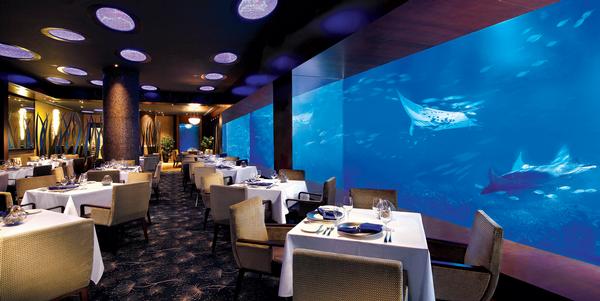

|
| S.E.A. Aquarium is Sentosa’s latest attraction to host a celebrity chef venue |
| |
|
Kath Hudson is a contributing editor of Attractions Management and other Leisure Media magazines.
Email: seventhwavedesign.com
|
|
 |
| Originally published in Attractions Handbook 2015 edition
|
|
 |
|
|
| | | | | |
